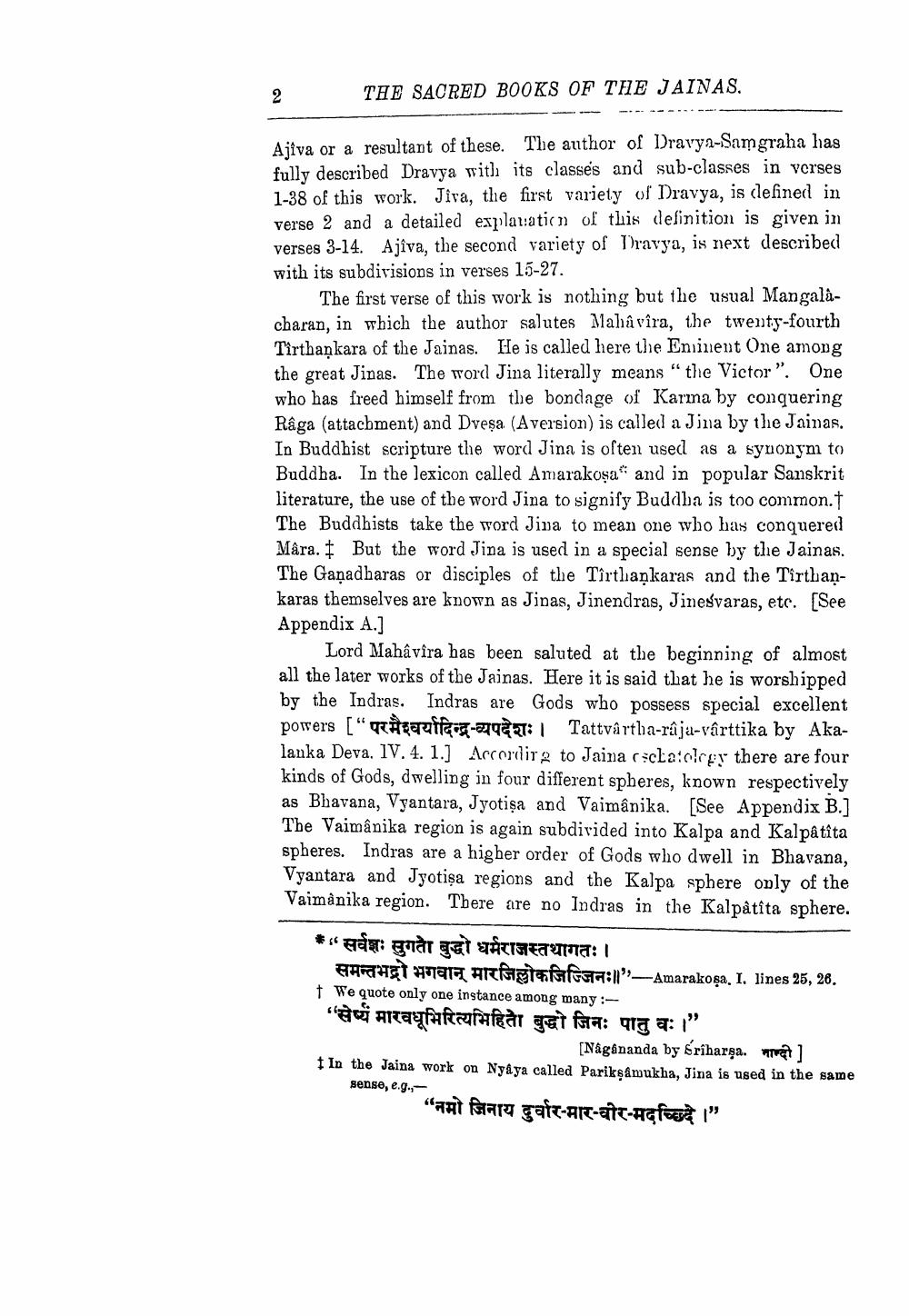________________
2
THE SACRED BOOKS OF THE JAINAS.
Ajiva or a resultant of these. The author of Dravya-Samgraha has fully described Dravya with its classes and sub-classes in verses 1-38 of this work. Jiva, the first variety of Dravya, is defined in verse 2 and a detailed explanation of this definition is given in verses 3-14. Ajîva, the second variety of Dravya, is next described with its subdivisions in verses 15-27.
The first verse of this work is nothing but the usual Mangalàcharan, in which the author salutes Mahavira, the twenty-fourth Tirthankara of the Jainas. He is called here the Eminent One among the great Jinas. The word Jina literally means "the Victor". One who has freed himself from the bondage of Karma by conquering Râga (attachment) and Dvesa. (Aversion) is called a Jina by the Jainas. In Buddhist scripture the word Jina is often used as a synonym to Buddha. In the lexicon called Amarakosa and in popular Sanskrit literature, the use of the word Jina to signify Buddha is too common.† The Buddhists take the word Jina to mean one who has conquered Mâra. But the word Jina is used in a special sense by the Jainas. The Ganadharas or disciples of the Tirthankaras and the Tirthankaras themselves are known as Jinas, Jinendras, Jinesvaras, etc. [See Appendix A.]
Lord Mahâvira has been saluted at the beginning of almost all the later works of the Jainas. Here it is said that he is worshipped by the Indras. Indras are Gods who possess special excellent powers["quit: Tattvartha-raja-vârttika by Akalanka Deva. IV. 4. 1.] According to Jaina eschatology there are four kinds of Gods, dwelling in four different spheres, known respectively as Bhavana, Vyantara, Jyotisa and Vaimânika. [See Appendix B.] The Vaimânika region is again subdivided into Kalpa and Kalpâtîta spheres. Indras are a higher order of Gods who dwell in Bhavana, Vyantara and Jyotisa regions and the Kalpa sphere only of the Vaimanika region. There are no Indras in the Kalpâtîta sphere.
" सर्वज्ञः सुगता बुद्धो धर्मराजस्तथागतः ।
समन्तभद्रो भगवान् मारजिल्लोकजिज्जिनः ॥” – Amarakosa. I. lines 25, 26 We quote only one instance among many :
“à‹ Arayfafafafàr geì faa: qrg a: 1”
]
In the Jaina work on Nyaya called Pariksâmukha, Jina is used in the same
sense, e.g.,
"नमोजिनाय दुर्वार-मार-वीर-मदच्छिदे ।”
[Nagananda by Sriharga.




